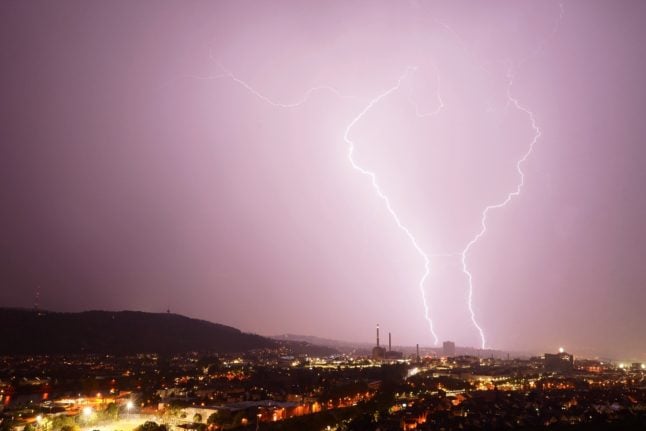A front of thunderstorms is forecast to cross the country from France, with the first to strike in the evening and roll across to the eastern part of the country on Sunday. The storms will segue into isolated rain showers in the west, lowering the sweltering temperatures by around 10 degrees Celsius in some areas on Sunday.
The cooler temperatures are set to continue at the beginning of next week, but will rise again as the week continues. “The summer has really got going now,” said Dorothea Paetzold, meteorologist of the German Weather Service (DWD).
While temperatures will remain between 31 and 37 degrees on Saturday, it will be cooler in mountainous and lakeside areas, and a north-westerly breeze is also expected to lower temperature slightly in the evening.
Some storms are also forecast to linger in central, southern and eastern Germany throughout Sunday.
The thunderstorms will remain in south-eastern Germany on Monday morning, but southern Germany will also catch the bulk of the heat at the start of next week, with temperatures at between 27 and 31 degrees Celsius. Temperatures in the north are set to remain at 20 to 25 degrees on Monday and Tuesday.
The north and east is also likely to see thunderstorms on Monday night.




 Please whitelist us to continue reading.
Please whitelist us to continue reading.
Member comments